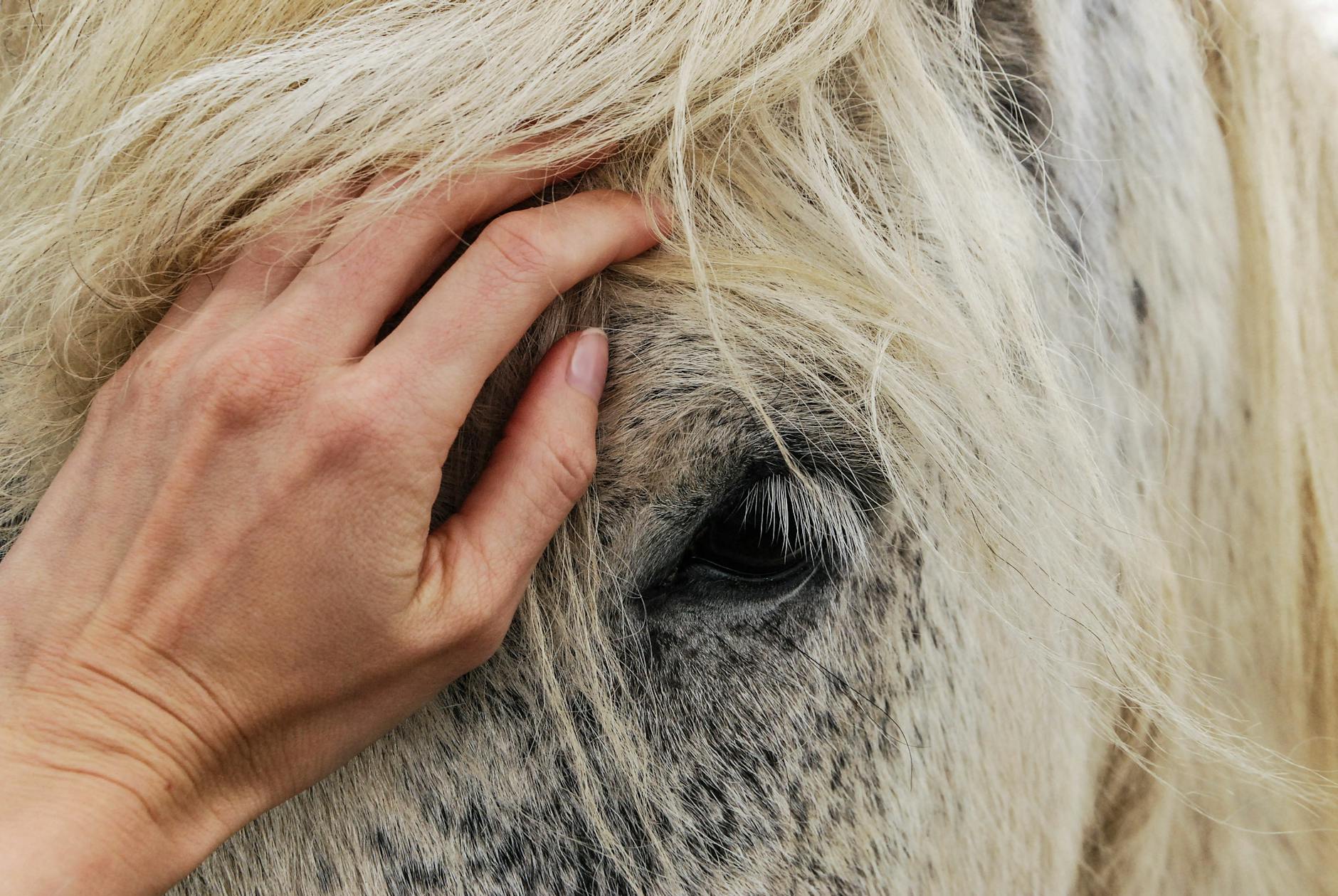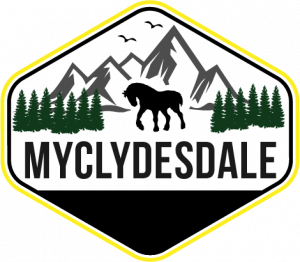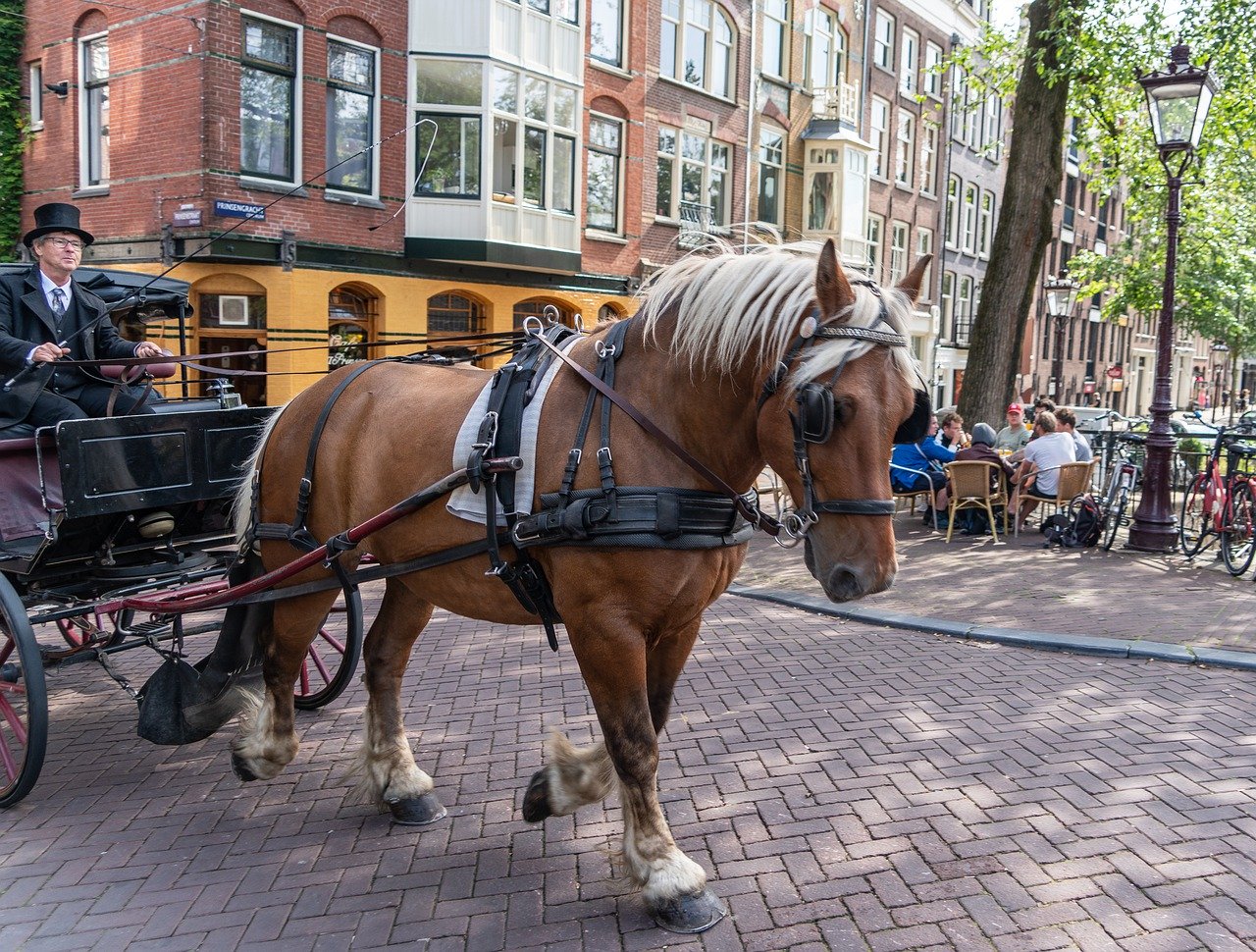As you may already know draft horses or draught horses are one of the largest breeds of horses and has been throughout history. They were bred to be a strong heavy horse to carry out different tasks on the farm from ploughing, forestry, coal and transporting of heavy materials. Known for being the Gentle Giants. There are a variety of draft breeds with different characteristics. While each draught horse possesses different characteristics they still have some common traits. These traits include patience, strength, agility and great and submissive temperament as well as a calm nature. For these reasons alone, makes them exceptional for farmers.
As mentioned above draft horses were the animals that kept agriculture going, But did you know that they were also used as warhorses. They were used by soldiers kept the armies operating better. They were very prevalent during world war I to support the military before motor vehicles became a reliable substitute.
were the animals that kept agriculture going, But did you know that they were also used as warhorses. They were used by soldiers kept the armies operating better. They were very prevalent during world war I to support the military before motor vehicles became a reliable substitute.
With increasing mechanization in the late 19th century, and in the 20th century, there began a decline in the draft horse population. Especially after World War I and after World War II, the motor vehicle and the tractor lessened the need for the draught horse. A lot of them were sold to slaughter and a huge number of draft horse breeds went on the decline.
Although they may not be used in the same way in what they were historically used for, they are used many other ways in today’s world. Some are trained to pull carts and wagon, some although a small amount are still used in agriculture and then others are used for pleasure for riding and trail riding. There are also extremely great show horses.
Draught horses are to be trained much the same as any other horse. Although this is true you should assert certain other instructions. Their natural work ethic makes draft horses tremendously willing to learn. There is no difference in training the Clydesdale than any other draught horse just their personality.
As there are so many different draft breeds and also some that are crossed with other horses.

Below is the Draft Cross Breeders and Owners Association recognizes these breeds as draught horses.
- American Cream Draft
- Ardennes
- Belgian or Brabant
- Boulonnais
- Breton
- Clydesdale
- Comtois
- Dole
- Dutch Draft
- Finnhorse
- Fjord
- Freiberger
- Friesian
- Haflinger
- Irish Draft
- Italian Heavy Draft
- Jutland
- Latvian
- Murakoz
- Noriker
- North Swedish Horse
- Percheron
- Pinto Draft
- Polish Draft
- Rhenish-German Cold Blood
- Russian Heavy Draft
- Schleswig Holstein
- Shire
- South German Coldblood
- Soviet Heavy Draft
- Spotted Draft Horse
- Suffolk Horse
- Vladimir Heavy Draft
Recommended Read
What Not To Feed Your Horse – Clydesdale Feeding?
Healthy Clydesdale – What to feed your Clydesdale?
Handling & Pre-Training
Any horse, not just a draft horse should be handled with care and with confidence. Plus always be aware that anything could happen when handling them or when near them. Whether it be a sudden scare from an animal, a noise or a sore spot on the horse just know of the danger that can occur.

It is important that you regularly handle them from a young age like birth if you intend them to be used for any work. This is to encourage them to be calm and quiet and to listen to you. It will make it easier when you are ready for training. Leading the horse regularly and picking its legs up from the beginning gives you the best results.
Asking the horse to lower his head is one of the first steps. This is done by tugging down on your lead rope. Then when he complies with this command, release the pressure. Make sure to repeat this step regularly. This should be a regular task you get him to do and you will always use it that’s why it is so important for not only a draft horse but any horse. This step is done in other parts of the body. By pushing on his shoulders for him to move away or pulling up on a leg to give you his hoof. Then immediately release pressure when he correctly responds.
At the age of two and a half or around three is a good time for training or breaking in your horse. Building a good relationship is essential, talking to him/her and taking great care will help you bond with your animal. In return, they will trust you. It is great if you are feeding your horse ninety per cent of the time as it will obviously help with building a great relationship. Take him/her to the stall/stable several times a week plus a good tip is to tie the horse there now and again so he/she gets used to it. To reduce the odds that he would pull back while being tied teach him to give pressure.

Learning a horse to move away by applying some pressure for back and forth movements. It is very important that your horse does not invade your personal space so be direct and let them know that this is not allowed. You’re the boss not them.
Adding in objects to the arena or field where you are training your horse is a great idea. Such as tarps as they blow in the wind, play the radio, put in a ball, colourful objects to is a good one. Don’t be alarmed if the horse gets scared or frightened, explain and show that it is not scary. Get them to obey different voice commands that you want, be confident, persistent and repeat numerous times over the course.
When laying different obstacles around the place of practice get them to go near them, make them move around them, stop in front of them, trot at them, jump over them, walk on top of them.
Take them on walks around different places that may be what they are not use to. Like for instance, sheds, side of your barn, tight places, anywhere that you can think of that would get them ready and that’s safe. Make them turn, go back, go forward, go around etc. Clear Repetition is key.
Also, try and be consistent in what you say or do, remember horses are smart and they can play up if the correct attention isn’t there.
Now you are nearly ready for them to start their training like riding, work, cart, all that a horse can your draught horse can do to remember.
Equipment Training Your Draft Horse

Introducing equipment before you place it on or hook them up to a cart or wagon is great for building their confidence to it. Gradually over a period of time letting them sniff and rub the saddle, harness, bridle etc, will help in the long run. Let them hear the equipment and the movement too before placing it on its back. Nice and easy approach the horse with each type of equipment. Ask the horse to stay and stand patiently for you to tack up and prepare the cart and everything.
Remember draught horses are exceptionally big and strong so prepare for the equipment to be big and heavy as well.
Knowledge is key and experience is great but if you are a beginner don’t worry like I said KNOWLEDGE IS KEY! You don’t have to have experienced just be safe and know the risks and dangers. Also, ask someone that has the experience to show you the ropes.
Once you have the ground word done a few good things to start would be to use an old sack or cloth and rub it all over the body. This is called the sacking out. This will help desensitize your horse to potentially scary things or situations.
At this stage, we would start training your Draught Horse. A draught horse can basically be trained for anything you really like.
Training A Draft Horse For
Pleasure Riding

A draught horse is not just used for extensive farm work and heavy labour, they can be excellent pleasure riding horses. They are calm and collected and brilliantly reliable on a ride
horses. They are calm and collected and brilliantly reliable on a ride
Cart or Wagon
Yes you may know that a lot of different horses are used for this but draught horses are exceptional in this field. With their large, strong and stable physique they will be no doubt that a draught can pull it. Also add a few horses to a cart or wagon if it is too heavy or you want to have a few on.
Forestry Work
Throughout draught horse history they were constantly used for forestry haulage. Pulling huge logs from one place to another. They were very efficient hard-working horses, that got the job done. Obviously, over the years motor vehicles became popular and were suited so the forestry working horse died out. Some still exist but are rare, although they are great for places where the motorized vehicle can’t go.
Farm Work

Farm work done by horses is still alive but quite rare. Mostly draught horses were and are used but other horses can also be used. If you are looking for a farm horse that is strong and hardy then the draft horse is for you. These are bred and built for hard and heavy work and in the process, you get a wonderful animal.
done by horses is still alive but quite rare. Mostly draught horses were and are used but other horses can also be used. If you are looking for a farm horse that is strong and hardy then the draft horse is for you. These are bred and built for hard and heavy work and in the process, you get a wonderful animal.
Conclusion
Although horse training can sometimes take a bit of time it’s important to remember that once you start, try to stay consistent. Regular and frequent is an essential key element when training your draft horse or any horse for that matter. There is no point in doing it one evening for two hours and ten minutes the next or choosing when its sunny when it may not be all the time. If that’s what is going to happen the horse will, therefore, forget what you have taught and that defeats the purpose and there is simply no point.
After being trained in whatever field you’d like it is so essential that you give it regular outings. A horse can’t simply be brought on a trail ride or for work every few months and cooperate. They need regular attention.
If you have no idea on what to do then you may prefer to take your horse to an experienced horseman for training and breaking-in. Don’t worry most people do this or they buy a horse which I older and has already been trained. If the horse was sent to a horseman to get trained it is really important for you to continue training when the horse gets back home.
More Fascinating Articles To Read
Healthy Clydesdale – What to feed your Clydesdale?
History of the Clydesdale Horse (All You Need To Know)
Recent Posts
Mastering English Dressage: Tips and Techniques Complete Guide 101
Introduction English dressage is an equestrian sport that involves precise movements and commands between a dressage horse and its rider. It is a graceful, beautiful art form that requires skill...
Introduction Are you looking to learn more about western dressage, the art of horse dressage? If so, you've come to the right place. In the previous blog we looked at Western vs English Dressage,...

